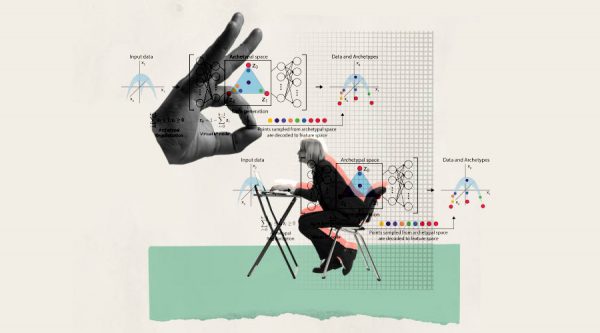The term “industry 4.0,” or “fourth industrial revolution,” refers to a change in manufacturing toward a more automated, linked, and data-driven process. The development of “smart factories” is made possible by technologies such as artificial intelligence (AI), robotics, big data, data analytics, and machine learning. A cyber-physical ecosystem, which combines information technology with operational technology, makes it easier for machines, devices, and systems to interact and work together, increasing manufacturing processes’ flexibility and efficiency.
ML-powered smart manufacturing
The precise application of data and intelligent technology to enhance industrial processes is the focus of smart manufacturing. The utilization of sensors for real-time data collection, connectivity for machine-to-machine communication, data analysis, and automation for efficient and controlled production processes are essential elements of smart manufacturing. The objective is to provide a manufacturing environment that is sensitive and flexible enough to swiftly react to shifting customer needs and market dynamics.
A crucial element of smart manufacturing is machine learning (ML), which aims to increase production’s efficiency, quality, and adaptability. Machine learning is the process of teaching computers to extract meaning from data so they can make decisions and predictions on their own. For example, without explicit programming instructions—which are essentially based on specified criteria—ML models can be trained to detect anomalies in production processes.
These autonomous systems are able to recognize inefficiencies, bottlenecks, and unprofitable lines. The ability of machine learning to learn is what makes it unique; it lets systems change and adapt without being forced to follow rigid programming that is predetermined.
Creation of products
Machine learning models are helpful in analyzing customer data to find unexplored business prospects that could result in new or improved products. Furthermore, businesses are able to predict changes in customer behavior and preferences by gaining a deeper understanding of market dynamics through the application of sophisticated algorithms. Goods meet customer expectations more closely, reducing the danger of selling goods that don’t appeal to the intended market.
Nike is one company that uses machine learning (ML) in product creation quite well. They use machine learning (ML) to customise product recommendations for each customer. Using information from their prior purchases, surfing history, and mobile apps, ML models are able to comprehend each customer’s distinct preferences and behavior in order to personalize product recommendations. As a result, shopping becomes more interesting.
Additionally, ML tools find popular performance characteristics, color preferences, and rising styles. This knowledge is crucial for developing new product concepts and designs.
Quality assurance
When used in conjunction with AI and ML, large-scale real-time data analysis can revolutionize quality control procedures. Product dimensions, surface features, and packing integrity, among many other factors, are being closely examined through the use of machine learning (ML)-driven picture identification and image analysis. Machine learning algorithms have the ability to detect even minute variations that could go unnoticed by humans, thanks to their ability to learn from past data and patterns linked to both acceptable and defective items.
ML/AI based image analysis can increase flaw detection rates over human inspectors by 90%, according to a McKinsey report. Quickly identifying and removing problematic products from the production line significantly lowers the possibility that defective products will be sold, increasing customer satisfaction and reducing costly returns.
Forecasting demand and managing the supply chain
Machine learning is excellent at streamlining procedures to avoid overproduction and stockouts. Machine learning (ML)-driven forecasting algorithms are constantly learning and adapting to changing market conditions by continuously analyzing large data sets such as sales history, market trends, and external factors. Businesses may minimize waste and match output to actual demand thanks to this.
Machine learning (ML) enhances supply chain efficiency in addition to demand forecasting and production planning. By analyzing supplier performance, inventory levels, and transit routes, it optimizes logistics. Optimizing supply chain procedures guarantees on-time delivery, lower transportation expenses, and the right amount of inventory.
Robotics and automation
Robotics and automation use AI-powered decision-making, which is driven by machine learning insights. Together, they enable robots to do complex jobs with hitherto unachievable levels of sophistication and flexibility. Collaborative robots, or “cobots,” outfitted with machine learning (ML) algorithms, operate differently from traditional robots, which are preprogrammed for particular tasks and use sensor data to dynamically adapt to their environment.
Cobots absorb data from their surroundings and develop experience through trial and error. Cobots use machine learning to identify differences and modify their operations accordingly. With time, they are able to manage a variety of components with amazing accuracy and fewer mistakes because to continuous learning. Automation driven by machine learning guarantees assembly lines have a high degree of accuracy in addition to flexibility and agility. Furthermore, they can perform difficult or complex jobs thanks to the integration of ML and sensor data, which improves workplace efficiency and safety.
Going on, with ML enabled
Machine learning has a broad impact on many aspects of production and is ushering in a new era of intelligent decision support systems. Machine learning (ML) has become a game-changer in modern manufacturing, enabling smart and continuous product inspection, predictive maintenance, quality improvement, process optimization, and efficient supply chain management. Real-time pattern and trend recognition via machine learning (ML) improves operational efficiency and helps make proactive decisions by averting problems before they become more serious.









